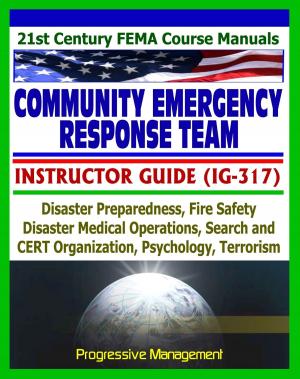The United States Strategic Bombing Survey: The Effects of Atomic Bombs on Hiroshima and Nagasaki, June 30, 1946 - Casualties, Radiation Disease, Japanese Decision to Surrender
Nonfiction, History, Military, Nuclear Warfare, World War II| Author: | Progressive Management | ISBN: | 9781301640836 |
| Publisher: | Progressive Management | Publication: | December 2, 2012 |
| Imprint: | Smashwords Edition | Language: | English |
| Author: | Progressive Management |
| ISBN: | 9781301640836 |
| Publisher: | Progressive Management |
| Publication: | December 2, 2012 |
| Imprint: | Smashwords Edition |
| Language: | English |
Professionally converted for accurate flowing-text e-book format reproduction, this is the official U.S. government report on the atomic bombings of Japan which ended World War II and ushered in the atomic age. Contents include:
I. Introduction * II. The Effects of the Atomic Bombings * A. The attacks and damage * 1. The attacks * 2. Hiroshima * 3. Nagasaki * B. General effects * 1. Casualties * Flash burns * Other injuries * Radiation disease * 2. Morale * 3. The Japanese decision to surrender * III. How the Atomic Bomb Works * A. The nature of the explosion * B. Heat * C. Radiation * D. Blast * E. The atomic bomb compared with other weapons * IV. Signposts * A. The danger * B. What we can do about it * 1. Shelters * 2. Decentralization * 3. Civilian defense * 4. Active defense * 5. Conclusion
The introduction states: The available facts about the power of the atomic bomb as a military weapon lie in the story of what it did at Hiroshima and Nagasaki, Many of these facts have been published, in official and unofficial form, but mingled with distortions or errors. The United States Strategic Bombing Survey, therefore, in partial fulfillment of the mission for which it was established, has put together in these pages a fairly full account of just what the atomic bombs did at Hiroshima and Nagasaki. Together with an explanation of how the bomb achieved these effects, this report states the extent and nature of the damage, the casualties, and the political repercussions from the two attacks. The basis is the observation, measurement, and analysis of the Survey's investigators. The conjecture that is necessary for understanding of complex phenomena and for applying the findings to the problems of defense of the United States is clearly labeled.
When the atomic bombs fell, the United States Strategic Bombing Survey was completing a study of the effects of strategic bombing on Germany's ability and will to resist. A similar study of the effects of strategic bombing on Japan was being planned. The news of the dropping of the atomic bomb gave a new urgency to this project, for a Study of the air war against Japan clearly involved new weapons and new possibilities of concentration of attack that might qualify or even change the conclusions and recommendations of the Survey as to the effectiveness of air power. The directors of the Survey, therefore, decided to examine exhaustively the effects of the atomic bombs, in order that the full impact on Japan and the implications of their results could be confidently analyzed.
A single atomic bomb, the first weapon of its type ever used against a target, exploded over the city of Hiroshima at 0815 on the morning of 6 August 1945. Most of the industrial workers had already reported to work, but many workers were en route and nearly all the school children and some industrial employees were at work in the open on the program of building removal to provide firebreaks and disperse valuables to the country. The attack came 45 minutes after the "all clear" had been sounded from a previous alert. Because of the lack of warning and the populace's indifference to small groups of planes, the explosion came as an almost complete surprise, and the people had not taken shelter. Many were caught in the open, and most of the rest in flimsily constructed homes or commercial establishments.
Professionally converted for accurate flowing-text e-book format reproduction, this is the official U.S. government report on the atomic bombings of Japan which ended World War II and ushered in the atomic age. Contents include:
I. Introduction * II. The Effects of the Atomic Bombings * A. The attacks and damage * 1. The attacks * 2. Hiroshima * 3. Nagasaki * B. General effects * 1. Casualties * Flash burns * Other injuries * Radiation disease * 2. Morale * 3. The Japanese decision to surrender * III. How the Atomic Bomb Works * A. The nature of the explosion * B. Heat * C. Radiation * D. Blast * E. The atomic bomb compared with other weapons * IV. Signposts * A. The danger * B. What we can do about it * 1. Shelters * 2. Decentralization * 3. Civilian defense * 4. Active defense * 5. Conclusion
The introduction states: The available facts about the power of the atomic bomb as a military weapon lie in the story of what it did at Hiroshima and Nagasaki, Many of these facts have been published, in official and unofficial form, but mingled with distortions or errors. The United States Strategic Bombing Survey, therefore, in partial fulfillment of the mission for which it was established, has put together in these pages a fairly full account of just what the atomic bombs did at Hiroshima and Nagasaki. Together with an explanation of how the bomb achieved these effects, this report states the extent and nature of the damage, the casualties, and the political repercussions from the two attacks. The basis is the observation, measurement, and analysis of the Survey's investigators. The conjecture that is necessary for understanding of complex phenomena and for applying the findings to the problems of defense of the United States is clearly labeled.
When the atomic bombs fell, the United States Strategic Bombing Survey was completing a study of the effects of strategic bombing on Germany's ability and will to resist. A similar study of the effects of strategic bombing on Japan was being planned. The news of the dropping of the atomic bomb gave a new urgency to this project, for a Study of the air war against Japan clearly involved new weapons and new possibilities of concentration of attack that might qualify or even change the conclusions and recommendations of the Survey as to the effectiveness of air power. The directors of the Survey, therefore, decided to examine exhaustively the effects of the atomic bombs, in order that the full impact on Japan and the implications of their results could be confidently analyzed.
A single atomic bomb, the first weapon of its type ever used against a target, exploded over the city of Hiroshima at 0815 on the morning of 6 August 1945. Most of the industrial workers had already reported to work, but many workers were en route and nearly all the school children and some industrial employees were at work in the open on the program of building removal to provide firebreaks and disperse valuables to the country. The attack came 45 minutes after the "all clear" had been sounded from a previous alert. Because of the lack of warning and the populace's indifference to small groups of planes, the explosion came as an almost complete surprise, and the people had not taken shelter. Many were caught in the open, and most of the rest in flimsily constructed homes or commercial establishments.















